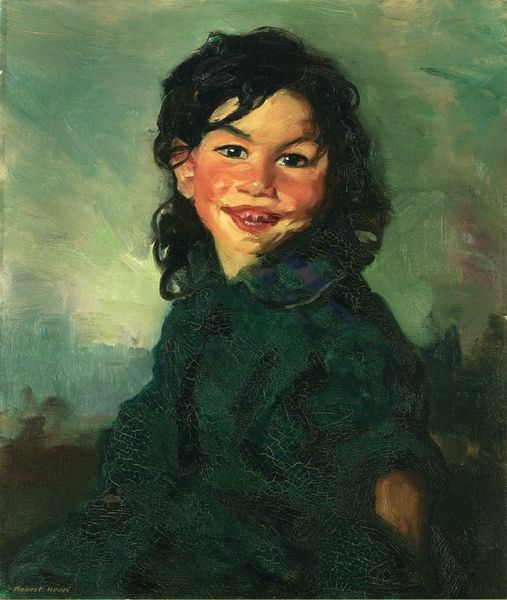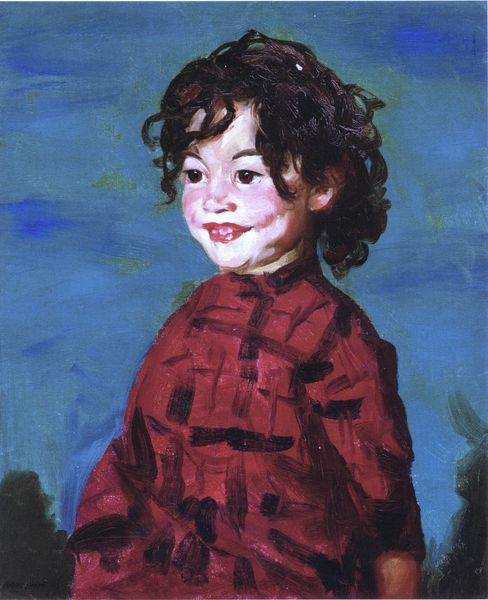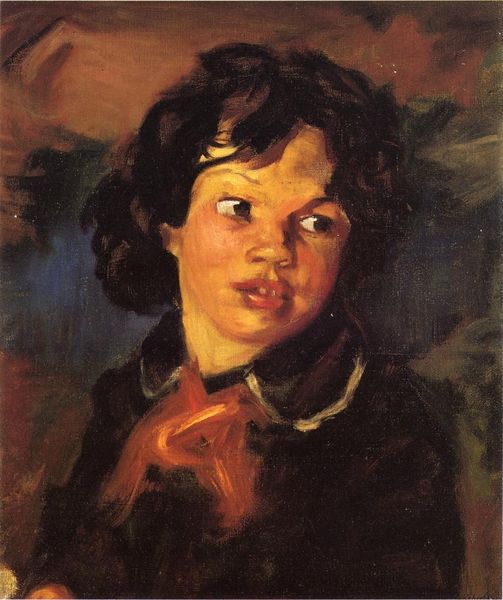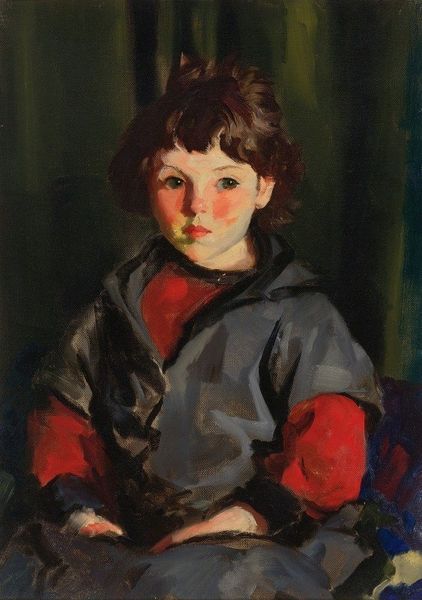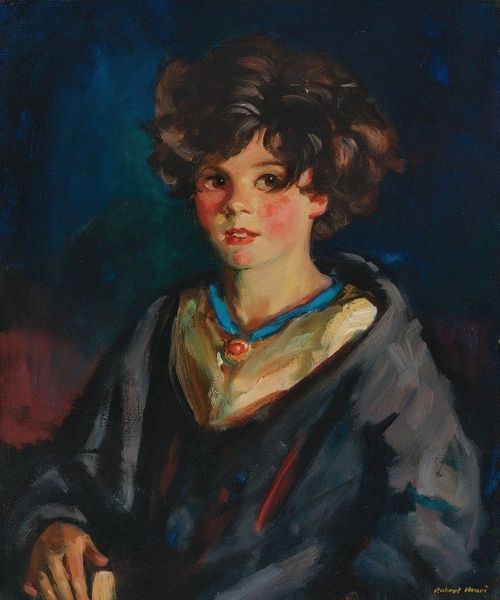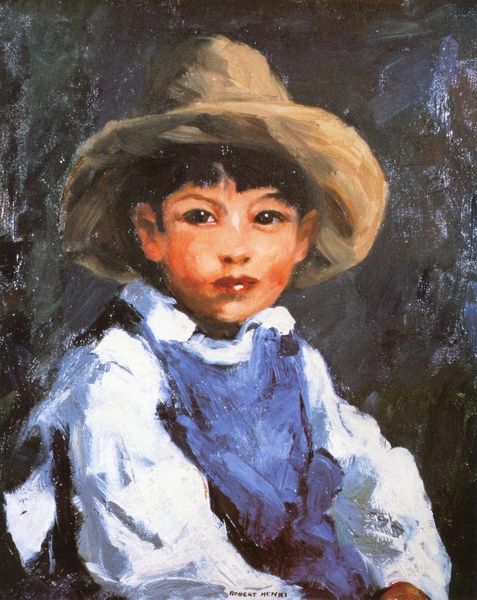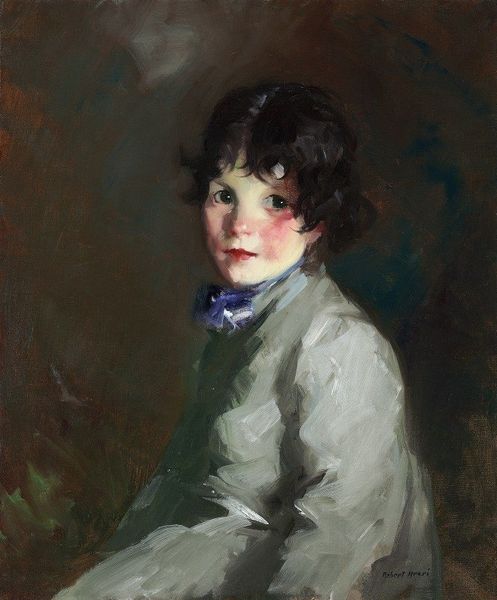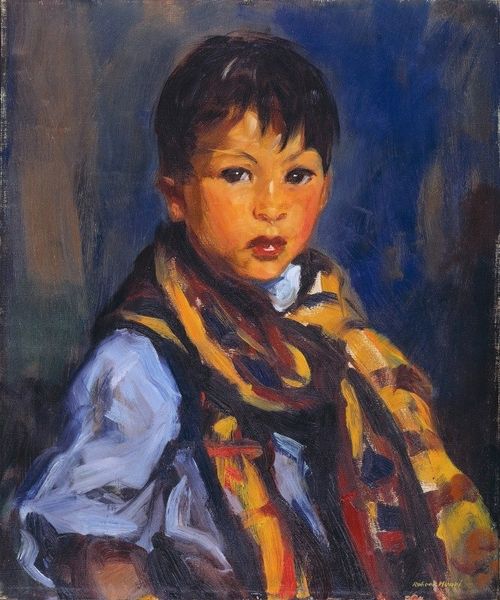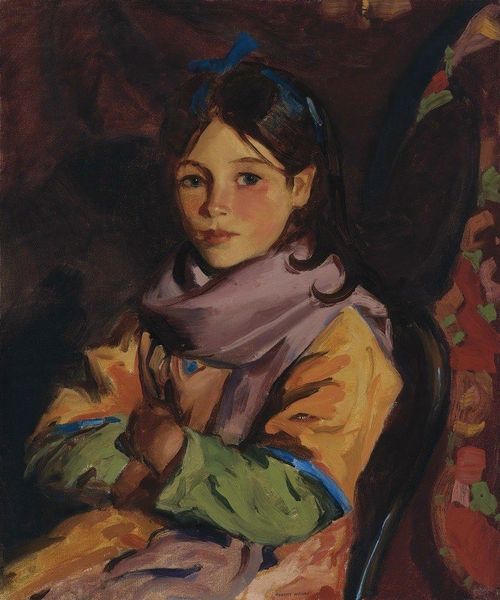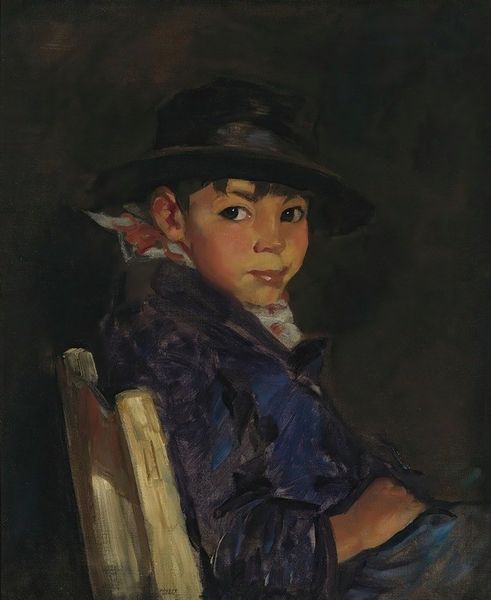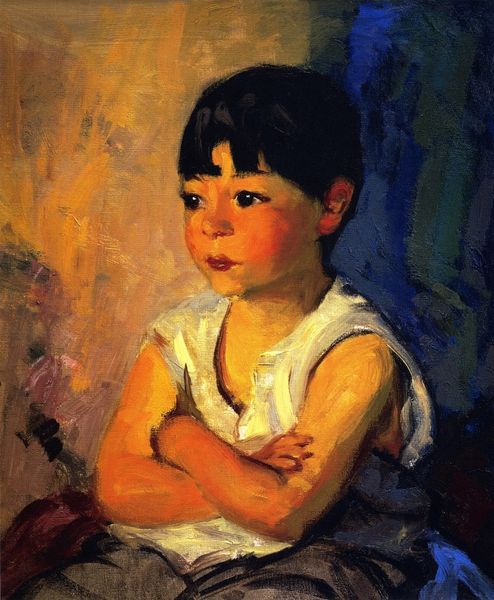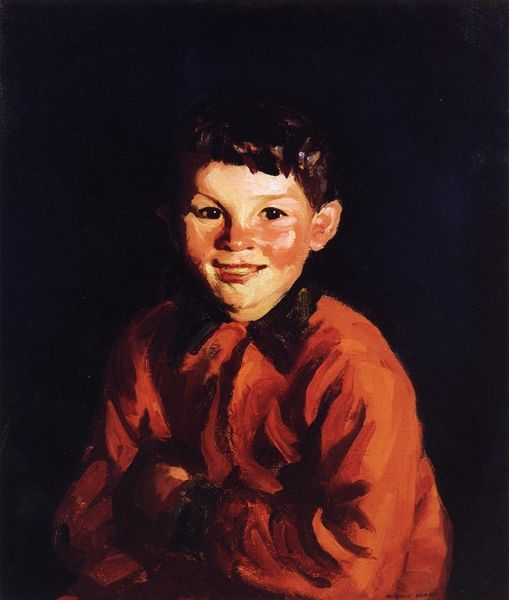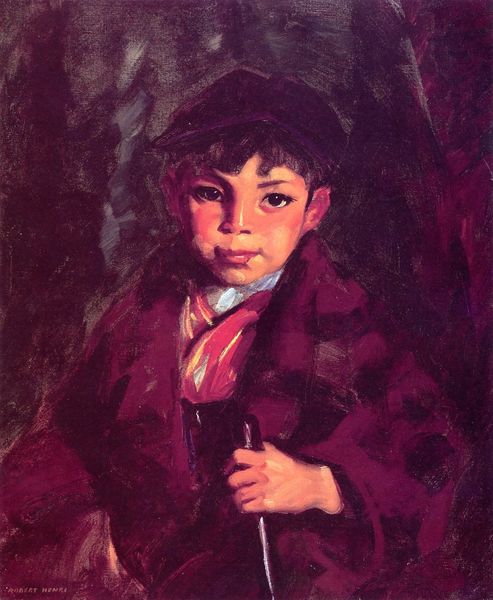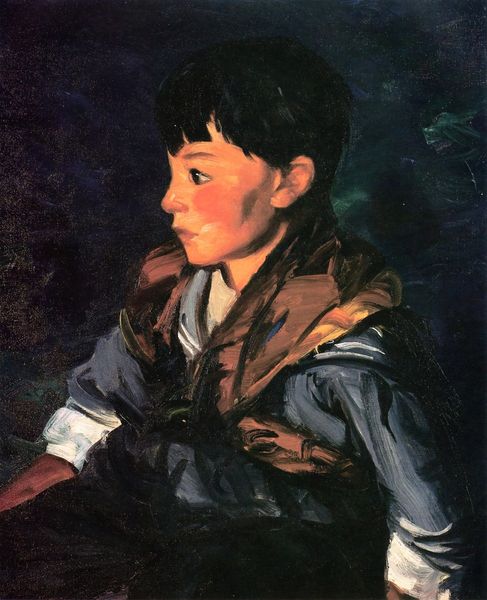
Copyright: Public domain
Curator: The Robert Henri portrait we see before us, titled "Thammy," was painted around 1915. It's an oil on canvas work. Immediately, I notice the tenderness in those wide eyes and rosy cheeks. Editor: Yes, it feels intimate, almost like we've stumbled upon a private moment. But also, there is a distinct power imbalance at play, capturing a child's image for public consumption, frozen in time according to an adult's gaze. I’m curious about who Thammy was and how Henri viewed his young subject. Curator: Robert Henri was part of the Ashcan School, known for their depictions of everyday life, often of urban, working-class people. The seemingly impressionistic rendering lends a certain idealism, maybe a hope for the future embodied in this girl. Note the careful composition with her at the very center of the canvas, dressed in vibrant, youthful colors. Editor: Her direct gaze complicates that, doesn't it? The fact that we're drawn to her eyes above all else creates a confrontational dynamic, like she’s not merely a passive subject. Also, her ambiguous ethnic features suggest that Thammy was, herself, an ethnic minority within American society. Henri, therefore, represents not an everyday person but a particular intersectional moment, not "innocent childhood", but complex societal forces. Curator: It makes you think, who holds the authority in this scene and how it influences the final image. I read her open, almost innocent expression, alongside those beautiful, spiraling locks, as universal signifiers of youthful potential. Perhaps, the green background and simple dress speak to ideals and an era. Editor: I disagree that it is simple or innocent because portraits are not ever so uncomplicated when representing power. Also, the very fact we don’t know who she is reveals just how powerless she would have been at the time. And here, preserved in oil and time. I don’t see hope or idealisation, rather a testament to history and how we treat subjects, how the narrative can obscure real stories. Curator: Well, whichever your takeaway, its ability to conjure a response over a century later indicates Robert Henri tapped into something truly universal about childhood— the promise and challenge, frozen in a frame. Editor: Perhaps; a reminder of childhood's complexities, its power dynamics, its cultural baggage, and the lasting legacy art holds, prompting us to rethink historical constructs to reveal these intricacies.
Comments
No comments
Be the first to comment and join the conversation on the ultimate creative platform.
